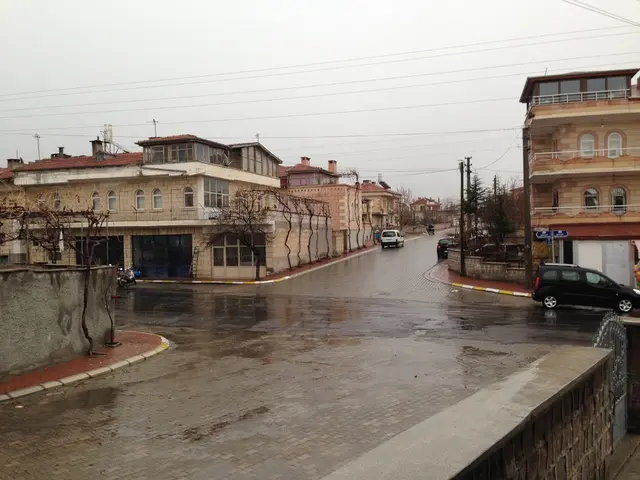State agency RMV and NVV commemorate milestone anniversary, outline strategies for future expansion - RMV and NVV commemorate their anniversary, discussing future advancements
Advancing Public Transportation in Hesse: RMV and NVV Pave the Way for Future Growth
In Hesse, a significant leap forward in public transportation (PT) was marked 30 years ago with the establishment of transport associations Rhein-Main Verkehrsverbund (RMV) and Nordhessischer Verkehrsverbund (NVV). These organizations aimed to streamline a fragmented PT system, consolidating fares, schedules, and improving passenger numbers.
Knut Ringat, the CEO of the Rhine-Main Transport Association, recollected the sentiment that drove the launch of RMV: "One timetable, one ticket, one fare." This simplified approach to PT eventually expanded nationwide with the introduction of the Germany Ticket, leading to a surge in PT usage three decades ago.
Following a record-breaking 825 million passengers in 2021, despite challenges such as staff shortages, construction sites, and remote work, both RMV and NVV anticipate continued growth. However, infrastructure projects causing delays and cancellations in RMV's rail services have been nicknamed by Ringat as the "decade of construction."
"We have to get through these five years," said Ringat, expressing confidence that improvements would be seen once the modernization process is completed. The CEO also highlighted that Deutsche Bahn had strengthened training and was in the process of modernizing control centers, with improvements expected this year.
Strengthening the PT workforce and infrastructure requires significant funding from both the federal and state governments, Ringat reported. Furthermore, additional trains will be necessary following the expansion, and greater financial support is essential to secure these acquisitions.
The North Hessian Transport Association (NVV), based in Kassel, shares similar ambitions for PT development in rural areas, where connectivity is critical. The association has increased its bus services through the "Every Village - Every Hour" campaign, with an objective of ensuring each location is accessible by bus or train at least once per hour. Passenger numbers in regional bus services alone rose by 10.3 percent last year.
Calling for urgent action, particularly in punctuality and reliability, NVV emphasizes the need for continuous, reliable, and adequate funding from the federal and state governments to fully realize their vision of a robust, expanded PT network.
As they celebrate their anniversaries, both associations are planning public campaigns, prize draws, events, and festivities for their passengers. The RMV will kick off a celebration on May 28 in Frankfurt, while the NVV has announced a passenger campaign titled "You're the Best" beginning on the same day.
In the broader context, the state of Hesse continues to invest in PT improvements, focusing on electrification, autonomous driving projects such as KIRA, and infrastructure upgrades to enhance efficiency and sustainability. These initiatives seek to position Hesse's PT system at the forefront of European trends toward innovation and environmental responsibility.
- The CEO of Rhine-Main Transport Association (RMV) believes that vocational training and modernization of control centers are crucial for the transport industry, as Deutsche Bahn is currently focusing on strengthening training and modernizing these centers.
- In order to maintain and expand their public transportation networks, both RMV and Nordhessischer Verkehrsverbund (NVV) require significant financing from both federal and state governments, not only for staffing but also for acquiring additional trains and implementing infrastructure projects, such as electrification and autonomous driving initiatives.








